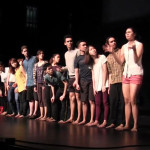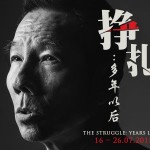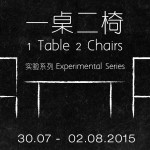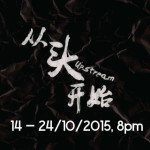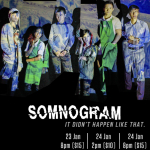“The curious case of the wild boar”
Reviewer: Sam Kee
Performance: 8 May 2015
According to natural history, lions do not appear to live in the South East Asian region. So what was that animal Sang Nila Utama saw in the bushes? What animal is full of hair, bright-eyed and darts quickly through the woods? A discussion takes place between Grandfather Liu (Yang Ser Pin) and his grandson (Sun Ya Huan). The grandson carries on to suggest that the animal is in fact a wild boar and insists on correcting this grave misconception. The name ‘Singapura’ will have to be changed; the merlion will have to be replaced. The grandfather has his reservations.
“A mer-pig?!” Grandfather Liu exclaims in disbelief, only to be met with the nonchalance of his grandson.
“You’ll get used to it.”
This phrase turns up numerous times in the play, reminding us of change, or our numbness to changes. Han Lao Da’s crosstalk production preys on the desensitisation of Singaporeans to the perpetual changes in our pragmatic society – changes that seem inevitable, or so we are told. The storytelling takes place in the form of crosstalk banters, typically between a pair of performers or in a group, and sometimes, as a solo monologue.
This 2-hour long play brings us through, briefly, several significant events leading up to Singapore’s independence. These were told mainly from the grandfather’s perspective as a member of the “Pioneer Generation”. The play ridicules popular beliefs surrounding the founding of Singapore, alludes to a hilarious contrast between Singapore’s and Malaysia’s governmental system, and makes puns on the issues of new immigrants. But sadly, it does not delve deeper into these social issues. The mocking barely scrapes the surface and does not seem to add new knowledge to these familiar issues. Or maybe it is due to a lack of irony or contradiction that so often contributes to the desirable comic effect of a good crosstalk.
The stage is divided into two: the background – a raised platform, and the foreground, where the crosstalk takes place. A mysterious woman paces up and down, with her head in a lit birdhouse on the raised platform; whilst a well-illustrated animation, projected on the screen, introduces a change of scenes. The setting of the stage-front incorporates an element from traditional Chinese theatre – a one-table-two-chairs setup. This, I gather, is meant to focus on the performers, drawing attention to their craft. Despite a star-studded cast – most of them veteran crosstalk masters in their own rights – their presence hardly fills up the stage. The energy of the cast seems low and the comic effect doesn’t fully come through. Moreover, the video projection and the mysterious character in the background seem to overwhelm the foreground more than complementing the acts. It feels like a deliberate attempt to clutter the stage in order to mask its vastness.
Crosstalk is a traditional Chinese form of comedy. The humour is a safety frame which allows us to forget the seriousness of the issue only to remind us of it again later. It has potential to engage audience in deeper reflections of social issues but in a light-hearted manner. My first encounter with crosstalk play was Stan Lai’s Crosstalk Travellers in 2012. It was a refreshing mix of dramatic performance and a traditional art form that introduced me to this genre of performance.
Thus, it was with much anticipation that I stepped into the same theatre to watch Singapore’s very own localized crosstalk play. To my disappointment, the acts fail to leave enough room for introspective thoughts, as the humour applied comes across as shallow and superficial. Perhaps, if the pacing was better and there was a stronger command of the space, the entire performance may have worked better.
Do you have an opinion or comment about this post? Email us at info@centre42.sg.
ABOUT THE PRODUCTION
IT COULD HAVE BEEN ___! by Crosstalk Theatre
8- 9 May 2015
Esplanade Theatre
ABOUT THE REVIEWER
Sam Kee is currently helming the literary and visual arts section at artsrepublic.sg while putting her major in Mathematics to good use at an educational publishing house.

